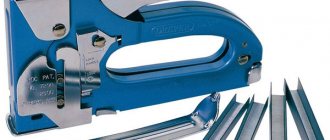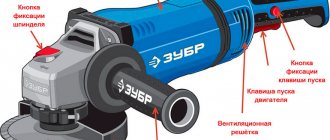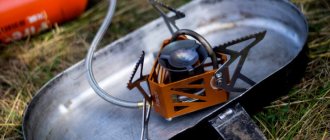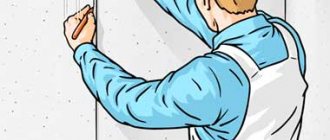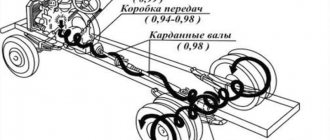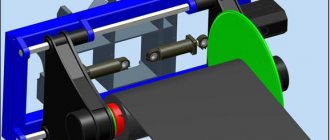A furniture stapler is a fairly universal tool with which you can not only perform furniture upholstery procedures, but also a number of other construction operations.
Today, there are several types of similar equipment, differing in their operating principles:
- pneumatic,
- electric,
- manual.
Pneumatic staplers are used in industry, and electric and manual staplers are used in everyday life. Models belonging to the latter type are the most common in the furniture industry due to their mobility and ease of use. Let’s use this example to look at the principle of operation, operation and repair of furniture staplers.
However, before moving on to this procedure, I would like to say a few words about staples and their varieties.
How to use a furniture stapler: device, operation, tips
A furniture stapler is a fairly universal tool with which you can not only perform furniture upholstery procedures, but also a number of other construction operations.
Today, there are several types of similar equipment, differing in their operating principle:
- pneumatic,
- electric,
- manual.
Pneumatic staplers are used in industry, and electric and manual staplers are used in everyday life. Models belonging to the latter type are the most common in the furniture industry due to their mobility and ease of use. Let’s use this example to look at the principle of operation, operation and repair of furniture staplers.
However, before moving on to this procedure, I would like to say a few words about staples and their varieties.
Not just parentheses
Some staplers can work not only with staples, but also with studs of various shapes. The designations of what the stapler works with are indicated on its body or in the instructions.
I tuck the nails into the stapler in the same way as with staples, but you need to be careful after pulling out the spring. A row of nails must be loaded along one of the outer edges of the letter “P”, and not inside this very letter!
If you want it to produce two nails side by side when working with a stapler, load the second row along the second outer edge. Next, the spring is inserted and the stapler is closed.
How to refill a mechanical stapler?
Furniture staplers are divided into three types:
- mechanical;
- electrical;
- pneumatic.
It is necessary to take into account the specifics of refilling the tool, which directly depends on its moving mechanism.
The design of such staplers is not much different from each other. They consist of a lever handle, through which mechanical pressure is applied, and at the bottom of the tool there is a metal plate that opens the receiver. This receptacle can accommodate staples.
The mechanical type is driven by the applied force of the hands, which indicates their weak power. The model contains a small number of staples. With their help it will not be possible to nail hard and thick structures. However, such assistants are light in weight and compact in size, so they will be needed for processing hard-to-reach places. The mechanical type of stapler is available due to its low price, is compact for carrying and easy to maneuver.
To insert staples into a mechanical stapler, you must follow these steps:
- To refill the stapler, you must first open the plate. To do this, you should take it on both sides with your thumb and forefinger, and then pull it towards you and down a little. Due to this, the metal tab located on the back of the plate will be pressed out.
- Then you need to pull out a metal spring, similar to the one found in an ordinary office stapler. If the staples are still loaded, they will fall out of the stapler when the spring is pulled out.
- The staples must be inserted into the receiver, which looks like a U-shaped hole.
- Then the spring is returned to its place and the metal tab is closed.
After completing these steps step by step, the tool will become suitable for further use.
What to do if a bracket gets stuck
It is worth noting another very important point that will help you in your work. It happens that the staples become bent and get stuck in the exit hole. They cannot be hammered into the surface and cannot be pulled out by hand.
In this case, we will need to pull out the feed magazine completely.
This option exists for almost all professional staplers.
First you will have to repeat the opening of the metal plate and pull out the spring.
Next, in the middle of the lower part of the stapler you need to find an iron part, slightly protruding from both sides. Grasp it tightly with your thumb and forefinger on both sides and pull down forcefully.
This will remove the entire feed magazine that was in the tool.
You will see a jammed staple that can now be easily pulled out by hand.
Putting the stapler back together is not difficult: the entire pulled out block returns to its place with a press. You should hear a click when you do this. Afterwards, do not forget to replace the spring.
Possible mistakes
There are several of the most common, frequently encountered errors and problems that accompany the operation of a furniture stapler. The tool may fire multiple staples at once, or not at all, and may damage upholstery material. Errors are due to the following reasons:
- incorrect pre-adjustment of the adjusting screw when performing work with traditional mechanical models of the device;
- neglect of the rule of advance marking of places for installing staples, which allows for high-quality and uniform tension of upholstery material;
- lack of fixation of the upholstery with a free hand in order to prevent the material from moving during operation with a stapler.
It is important to control the number of staples inside the “magazine” of the tool, and also be sure to secure the handle with a safety lock immediately after finishing work. This will prevent spontaneous or accidental shooting.
It is strictly forbidden to work with a faulty tool. If necessary, the problem is diagnosed, and the firing pin that has exhausted its life is also periodically replaced.
Breakdown prevention measures
Some craftsmen advise that when storing a tool for a long time, loosen the screw of the furniture stapler that regulates the compression of the spring. The less the spring is compressed, the greater the possibility that it will not sag in the shortest possible time and will last several times longer than stated in the warranty card. Of course, before the next use it will need to be adjusted again, but this is the lesser of two evils. It's better to spend a few staples on resetting than to go to the store for a new stapler.
An important factor in preventing “diseases” of a tool such as a stapler is its lubrication. Regardless of whether it was in constant use or in storage, it is advisable to lubricate the mechanical parts of the tool once every three months, then you won’t have to rack your brain every time about why the stapler is not working well and how to repair the tool. What should be lubricated and how:
- Unscrew the adjustment screw completely, pour some sewing machine oil into the hole, screw the screw into place and fire a few dry shots.
- Then open the magazine where the staple blocks are inserted and pour some lubricant into the slot of the impact mechanism. Raise the stapler upside down and fire a few more blank shots.
- It is also advisable to lubricate the mechanism (rammer) for feeding staples.
This simple maintenance won't take much time, but will extend the life of your instrument.
Pneumatic construction staplers
Differences from mechanical and electrical devices:
- Pneumatic staplers are used for serious work on an industrial scale. They are distinguished by high speed (50-60 beats per minute) and power of charge delivery.
- Long staples and nails may be used.
- The weight of the gun is comparable to an electrical unit operating from an outlet.
- Another device design. There is no spring here; the charge is clogged by the force of air compression.
- Disadvantages: dependence on electricity and compressor. Such instruments can be considered stationary.
- When purchasing, you need to know the pressure for effective operation. The minimum value for pneumatic staplers is 4, the standard is 5-6 bar.
- The cost of devices is much higher than their electrical and mechanical counterparts.
Two main varieties and their structure
But in order to begin repairing a stapler or to understand from problems what may “break” in it or cause these problems, you should familiarize yourself with the structure diagram of staplers in more detail. We present to your attention two types of mechanical furniture staplers, which are most widespread. The most common is this option, in which the spring adjustment screw is located on top.
Here is another type of stapler, where the spring tension screw is located under the handle. This is a rarer variety.
It can be seen that the operating principle of both mechanisms is similar, and therefore the setup and repair will be almost the same, as well as the causes of problems with the operation of the tool.
Preparing the tool for work
In our case, a mechanical stapler will be used to attach the foam rubber and upholstery fabric to the bench seat. To do this, you need to choose the right fasteners . Depending on the thickness of the foam rubber, choose brackets that, when fastened, will grip the material itself and the base. It is better to take large ones, 14 - 16 mm in size, so that the material is securely fixed. But remember that the size of the staples should not exceed the maximum allowable for the tool you are working with. Otherwise, you won’t be able to insert them into the magazine, and if you do, there is a high probability that they will get stuck.
The choice of fasteners for nailing upholstery depends on what material you will use:
- For velvet, flock, cotton or linen, you need small staples, 4–6 mm in size (they will not damage the thin fabric and will fix it well).
- For denser materials, such as leather, suede, microfiber , staples measuring 8 - 10 mm are suitable.
Remember that it is better to buy branded consumables . After all, low-quality fasteners can damage the product or cause damage to the tool itself. Original staples will not get stuck in the stapler, will not break or bend, they fit perfectly into the material the first time, so they are used very economically.
Remember your safety! When working with sharp staples and nails, use personal protective equipment . Be sure to wear gloves so that if fasteners accidentally fly out, your hands are protected. Also, this will help prevent your palm from slipping, which is very important when carrying out such painstaking work as upholstery.
Many people forget
Before work, adjust the adjusting screw according to the material of the surface you are going to work with.
If it is hard plywood, strong penetration of the material will be required, therefore, it is worth setting a high force. If it is a loose surface, the force must be reduced so as not to break through the fabric, or for example the PVC panel that you are shooting.
During operation, it is recommended to press the lever with one hand and press the adjusting screw with the thumb of the other hand. Then the recoil will be minimal and the load will be distributed evenly in the stapler. You will be able to nail the brackets much better.
Safe work techniques
Using a mechanical stapler.
By following safety precautions when using the device, you will avoid unnecessary injury. And the device will last longer:
- Before replacing staples, you need to put the tool on safety. This way he won't shoot by accident.
- Do not point the stapler at yourself or other people or animals.
- When transporting or storing the device, always switch the safety switch on.
- The tool can only be used in a sober mind. Persons in a state of intoxication are prohibited from handling a stapler.
- The work place should be well lit.
- Care must be taken to ensure that staples hit metal surfaces to avoid rebound. It is important to use special glasses to prevent the charge from flying into the eye.
- If the fastener is stuck in the product and is not completely clogged, you must carefully remove it.
- If small parts are used in the work, they need to be clamped in a vice. Driving staples into small surfaces directly in your hand is very dangerous.
- During work, the body position should be natural, clothing should be comfortable, and the sole should not slip.
When working with an electric or pneumatic stapler, you must follow the safety rules described for mechanical tools. More important:
- An electric stapler cannot be used indoors if there is a risk of explosion;
- you need to make sure that the switch on the device is off before plugging the cable into the outlet;
- the device body, electrical cable and plug must be undamaged;
- The power tool cannot be used outdoors during rain and snow, or indoors in high humidity;
- there should be no people or animals in the work area;
- all components of pneumatic tools must be in good working order and not damaged;
- During operation, the power cable must not come into the worker's area.
Mechanical, electric or pneumatic staplers are easy to use. But it is important to use the tool correctly. You need to charge it with fasteners with the markings indicated for your model. It is also necessary to adjust the mechanism for the required force of driving in staples. The main thing: follow safety rules when using. Careful handling and careful use are the key to productive work with any stapler.
Video “Master class on replacing staples in a stapler”:
open the box of staples, take a batch of staples, open the stapler, insert the staples, pointy ends down.
I don’t know if the procedure for inserting staples is the same in all staplers, but I just looked at my stapler and can write this:
- Open the stapler
- Pull the spring device that held the brackets in position downwards,
- Insert the brackets into the space provided (so that you get the letter P standing on a support, and not upside down),
- Slowly return the spring to its place and it will rest against the brackets.
- Close the stapler.
A construction stapler is a multifunctional mechanism. It is used when it is necessary to connect identical or different not particularly hard materials to each other, for example, plastic, wood, film, insulation, plywood. This tool is called differently: tacker, staple gun, staple gun, nailer, staple gun. The individual elements are fastened to each other using staples, pins or small nails. To know how to properly work with a construction stapler, you need to understand its design, the types of fasteners suitable for it, and the method of setting up and replacing staples.
Characteristics and types of furniture brackets
The main indicator that is taken into account when choosing a bracket is its depth. Depending on the nature of the work performed, this indicator can vary from 4 to 14 millimeters.
So, for example, in order to carry out the procedure of upholstering furniture with fabric, a staple with a depth of 8 millimeters will be sufficient, while for fixing thicker materials, a staple with a greater depth should be selected.
Also, depending on the overall dimensions, staples are divided into the following types:
- 53 is the most common. Staples of this type have a width of 11.4 millimeters and a thickness of 0.7 mm. The depth of this fastening element varies from 4 to 14 millimeters;
- 140 - having the following characteristics: width - 10.6 millimeters, thickness - 1.2 mm, depth - similar to the previous type;
- 36 - this marking means that the stapler can shoot staples that have a semicircular shape and are mainly used for cable installation;
- 300 are special nails intended only for the stapler.
When choosing a bracket, you should also take into account the structure of the material from which it is made.
Regular steel staples work just fine on regular wood. However, if you are dealing with particleboard or plywood, you should purchase staples made from hardened steel, as regular ones may simply bend.
How to choose a construction stapler
The technical characteristics of a construction stapler depend on the type chosen. Staplers are classified according to the type of driving force. There are three types of construction staplers:
- Mechanical construction stapler. Works due to mechanical force. By pressing the trigger, the spring inside the stapler is activated, driving the staple into the material with great force. The disadvantage of a mechanical stapler is its low efficiency when working with hard materials; however, it is compact, lightweight, and easy to carry with you in a standard tool box.
- Electric construction stapler. The same trigger sets the spring in motion, but this tool no longer requires mechanical force; the power source is electricity. Staplers are available in two types: mains-powered and battery-powered. Each stapler has its own advantages and disadvantages: a network stapler is more powerful and will not shrink at the right moment, but the electric wire gets in the way; The battery-powered model eliminates the risk of the cable being punctured, but the battery makes the tool heavy and bulky.
- Pneumatic construction stapler. It works due to the high pressure created by pneumatics inside the stapler. They have high performance, but due to the heavy compressor, they are stationary, and are more often purchased for industrial purposes than for home use.
In addition to the type of driving force, it is customary to distinguish between professional and household tools. Household staplers are short-lived and are made mostly of plastic. Professional staplers are designed to last a long time and have a long service life. For home and household needs, I recommend purchasing semi-professional hand tools; they are made from high-quality materials, will last for many years, but will cost several times less than professional tools.
Wrong option
The mistake many people make is that when the stapler runs out of staples, they pull back the two-sided tabs of the frame lock, open it and try to insert the next clip of staples through the front part on the impact mechanism side. As a result, with an awkward movement, the spring mechanism continually throws the clip back, and it flies many meters away, after which you have to search for it for a long time. Often the clip can fly into the eye of the unlucky “stapler operator”. Here is a video that shows what not to do, although the operator himself is not aware of it.
Advantages
The tool has a number of undeniable advantages , regardless of the type of stapler used:
- Reliability and high degree of safety when working with the tool.
- Thanks to the use of a stapler, you can significantly save your energy and time in the process of repairing or reupholstering furniture, as well as when carrying out other specific repair and construction work.
- The convenience is that you can operate the device with only one hand.
- The device, regardless of its type, is easy and simple to use. That is, no special skills are required when working with a stapler.
- All risks associated with the likelihood of mechanical damage to the product to which the device is used are minimized.
- Installation using a stapler takes much less time than when working with nails and a hammer.
- When stitching with a tool, you can use different types of material.
- With proper operation, the device can operate uninterruptedly for a long time.
- Thanks to the powerful impact force, the workpiece always remains in its original form.
- The tool is very multifunctional, since various stapler models can use not only staples, but also nails or screws as consumables.
- Materials for stitching products are not subject to corrosion.
- The tool can be used even in hard-to-reach places.
It should be noted that for household needs you should always choose a mechanical device. It is easy to use and maintain and, importantly, has an affordable price.
Replacing the matrix for compact storage of stapled sheets of paper
The matrix is often a stapler where the ends of the staples rest and bend under force. Moreover, they can bend in various ways. The most common is when the ends of the paper clips form semicircular parts.
In view of this, when storing stitched sheets in folders, there is an irrational use of space. Things are different when the ends of the paper clips are bent flat.
Often the matrix is rotating. It is enough to turn it to the opposite side to enter the stapler into temporary stapling mode. In this modification, a bent paperclip can be removed using two fingers and nothing more (unbending the paperclip is not required to separate the stitched sheets again).
In the video you can see all aspects of using a stapler in practice:
Tweet
Correct option
The correct way to insert paper clips into a stapler of a construction or furniture type is to press the back of the holder of the spring-loaded paper feed mechanism, release its groove from the lock hole and pull it out completely. Afterwards, you can even insert more than one clip into the frame and return the spring of the mechanism to its place, thereby ensuring its uninterrupted operation for a long time. Here's a video of how to do it correctly.
You should open the frame as in the first, incorrect case only when one of the paper clips gets stuck in the exit slot.
We hope you found our article useful. Enjoy your “recharge”!
A stapler is a universal thing. It will always come in handy not only in a professional environment, but also in a home environment. Nail insulation, cover the greenhouse with film, change the upholstery of furniture or secure a cable - the possibilities for application are wide. There are so many pistols on the market today, it's not always easy to know which one is best. But it is important to understand this issue, because different types of pistols are used in different ways. The device, the type of tool, the size of the staples - your head can spin.
Pistols can be divided into several groups:
- mechanical;
- electrical;
- pneumatic.
